I'm trying to apply texture to my .md2 model. I used the Gouraud shading to color it (the standard algorithm with bottom/top flat triangle) and I have to use a similar code for texture co-ordinates U and V. But I don't really understand how to interpolate them. From what I've tried it seems that my code only interpolates down the edges, not between them. What did I miss?
Thank you.

Here the colour is formed by u as red, v as green and 255 as blue(just for the bottom flatted triangles):

void Rasteriser::TfillBottomFlatTriangle(Vertex vertex1, Vertex vertex2, Vertex vertex3, COLORREF c1, COLORREF c2, COLORREF c3, HDC hdc)
{
float slope1 = (vertex2.GetX() - vertex1.GetX()) / (vertex2.GetY() - vertex1.GetY());
float slope2 = (vertex3.GetX() - vertex1.GetX()) / (vertex3.GetY() - vertex1.GetY());
//U and V
float slope1U = (vertex2.GetU() - vertex1.GetU()) / (vertex2.GetY() - vertex1.GetY());
float slope2U = (vertex3.GetU() - vertex1.GetU()) / (vertex3.GetY() - vertex1.GetY());
float slope1V = (vertex2.GetV() - vertex1.GetV()) / (vertex2.GetY() - vertex1.GetY());
float slope2V = (vertex3.GetV() - vertex1.GetV()) / (vertex3.GetY() - vertex1.GetY());
float x1 = vertex1.GetX();
float x2 = vertex1.GetX() + 0.5f;
//U and V
float x1U = vertex1.GetU();
float x2U = x1U;
float x1V = vertex1.GetV();
float x2V = x1V;
if (slope2 < slope1)
{
float slopeTmp = slope1;
slope1 = slope2;
slope2 = slopeTmp;
float slopeTmpU = slope1U;
slope1U = slope2U;
slope2U = slopeTmpU;
float slopeTmpV = slope1V;
slope1V = slope2V;
slope2V = slopeTmpV;
}
for (float scanlineY = vertex1.GetY(); scanlineY <= vertex2.GetY(); scanlineY++)
{
/* loop over each pixel of horizontal line */
for (float xPos = ceil(x1); xPos < x2; xPos++)
{
float t = (xPos - x1) / (x2 - x1);
float u = (1 - t) * x1U + t * x2U;
float v = (1 - t) * x1V + t * x2V;
COLORREF colour = _model.GetTexture().GetTextureValue((int)u, (int)v);
SetPixel(hdc, (int)xPos, (int)scanlineY, colour);
}
// get new x-coordinate of endpoints of horizontal line
x1 += slope1;
x2 += slope2;
x1U += slope1U;
x2U += slope2U;
x1V += slope1V;
x2V += slope2V;
}
}
